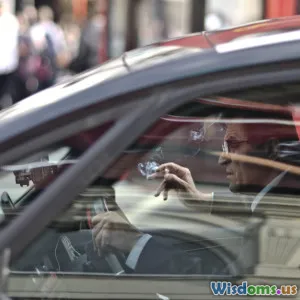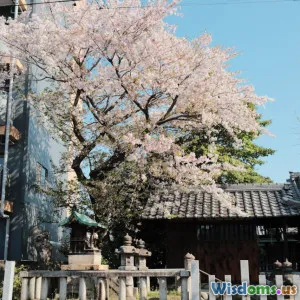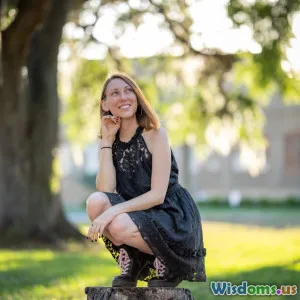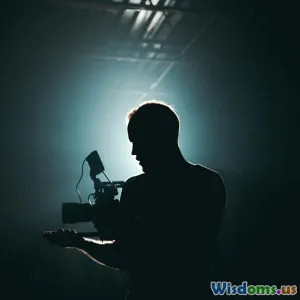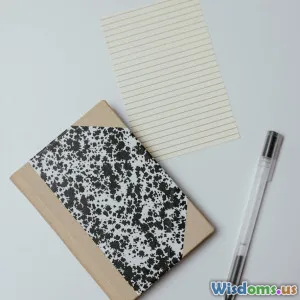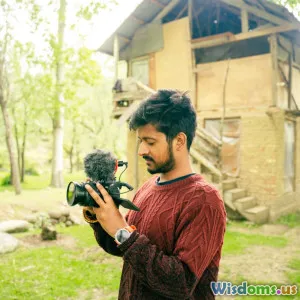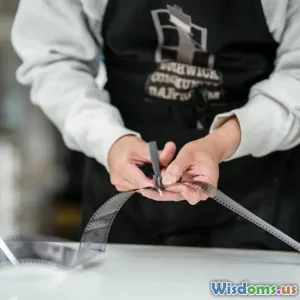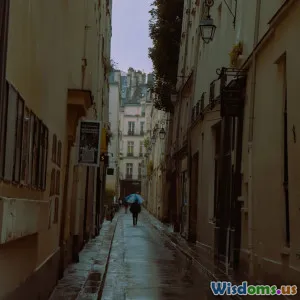
Exploring Hidden Photo Ops in Urban Environments
7 min read Unlock the secrets of urban photography by discovering hidden photo ops that transform cityscapes into captivating art. (0 Reviews)
Exploring Hidden Photo Ops in Urban Environments
Photography and filmmaking enthusiasts often picture urban landscapes as a chaotic blend of skyscrapers, traffic, and crowds. However, beneath that seeming clutter lies a world brimming with untapped photographic potential. Hidden corners, overlooked back alleys, and unconventional perspectives offer unique photo ops that can transform your creative output and redefine your connection to the city.
Introduction: The Urban Jungle as a Canvas
Cities are alive with texture, contrast, and stories waiting to be told. Yet, most urban photography gravitates toward iconic landmarks or busy thoroughfares—places that are often crowded and highly familiar. The challenge, therefore, is to venture beyond these obvious spots.
As renowned street photographer Garry Winogrand once said, “I photograph to find out what something will look like photographed.” That philosophy embodies the essence of exploring hidden urban photo opportunities. It requires curiosity, patience, and a willingness to see the city through fresh eyes.
1. Rethinking Urban Spaces: Seeing the Unseen
Off-the-Grid Alleys and Forgotten Corners
Instead of lining up for the famous spots, explore lesser-known alleys and underpasses. For example, in New York City, the DUMBO area beneath the Brooklyn Bridge isn't just about the bridge itself; the cobblestone streets, graffiti art, and rusting industrial remnants supply rich storytelling elements and textures.
Pay attention to how light filters into narrow alleyways at different times of day to evoke mood; early morning or late afternoon often produces elongated shadows and warm tones, transforming mundane walls into abstract compositions.
Rooftops and Elevated Perspectives
While rooftops are often off-limits, many cities provide accessible spots or public spaces atop buildings with permits or designated hours. Capturing the cityscape from above offers surprising contrasts—crowded streets below versus calm sky above.
Take Tokyo’s Shibuya Crossing from a rooftop vantage point: the chaotic pedestrian intersection turns into a hypnotic pattern from above, illustrating human movement on a grand scale.
Capturing Urban Reflections
From puddles after rain to reflective glass surfaces, reflections can double your photo's depth and create captivating illusions. Chicago’s Cloud Gate (the “Bean”) is a famous example where reflections warp reality, but similar effects exist in smaller, hidden mirrors—such as glass storefronts or polished car hoods.
2. Harnessing the Power of Details
Intricate Urban Textures
Bricks, peeling paint, rusty metal, and tiled murals all narrate the city's historical and cultural layers. Close-up shots of textures provide a tactile visual experience and often go unnoticed by casual observers.
Photographer Vivian Maier’s work exemplifies how focusing on details in urban everyday life can reveal poetry by framing unnoticed elements.
Patterns and Geometry in Architecture
Look beyond iconic buildings to discover repetitive shapes and unusual architectural details—like staircases curling upward or repetitive windows casting rhythmic shadows. These elements form abstract patterns that lend well to black-and-white photography, emphasizing form over color.
3. Engaging the Urban Human Element
Candid Street Portraits
Capturing moments of human interaction in transit or daily routine highlights urban life’s emotional undercurrent. Focus on authentic expressions, gestures, and cultural nuances. For instance, diverse neighborhoods provide vibrant human stories, from musicians playing on the street to artisans at work.
Interactions with Environment
Look for scenes where people and surroundings merge uniquely—someone leaning against a vibrant mural, light casting a silhouette on a casual passerby, or reflections of individuals mingling with architectural elements.
4. Practical Tips for Exploring Hidden Photo Ops
Research and Scout Locations
Use tools like Google Maps satellite view to identify promising rooftops, alleys, and unseen passages. Social media and urban exploration forums often reveal less-known locations and their access information.
Be Patient and Observant
Light changes rapidly in urban environments; revisiting a spot at different times can yield dramatically different photo results. Midday may be harsh while dawn or twilight soften shadows and add atmosphere.
Respect Privacy and Regulations
Urban exploration requires mindfulness of private property rules and local laws. Always seek permissions when necessary and respect people’s privacy—especially when photographing individuals.
Conclusion: Embracing the Unseen City
The city is an inexhaustible source of inspiration for photographers who dare to look beyond the obvious. Hidden photo ops reveal the richness, complexity, and soul of urban environments through fresh perspectives, details, and human stories. By engaging curiosity, embracing patience, and refining observation skills, photographers and filmmakers can transform everyday cityscapes into striking visual narratives.
So, step out from the beaten path, explore those concealed corners, and let the urban jungle enrich your creative journey with newfound depth and meaning.
References:
- Winogrand, Garry. The Man Who Shot America.
- Vivian Maier, Street Photographer Extraordinaire (biographies and collections).
- Urban Exploration Blogs (e.g., Urban Ghosts Media).
- Google Maps and social media for site scouting insights.
Happy exploring and shooting!
Rate the Post
User Reviews
Other posts in Street Photography
Popular Posts










